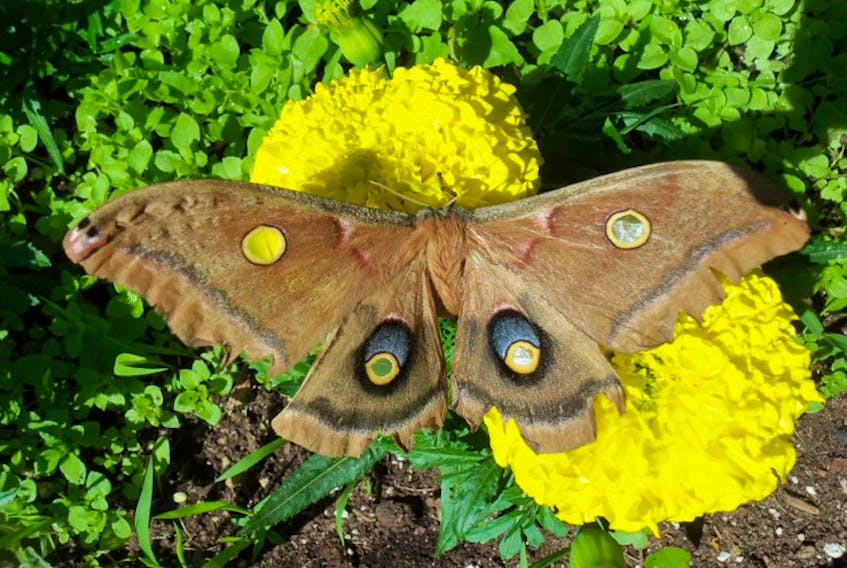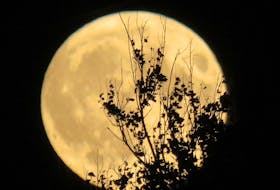Last Thursday, I wrote about a lovely moth that was spotted on Prince Edward Island. It’s been a while since I’ve received so many follow-up emails and photos about a column. It appears that Atlantic Canadians love their moths!
Sandy Morrison wrote:
Hi Cindy. I was reading your post about the silk moth and wanted to share a picture of a silk moth that visited my giant marigolds (in Kingston, N.S) a few years ago. It was so big and beautiful!

The other one is a hummingbird moth, visiting the lilacs at my nephew’s home just recently in Miramichi, N.B. I had never seen or heard of a hummingbird moth. Very beautiful!

And this lovely letter from Christina:
“Residents at the Gillis Lodge Memorial Lodge in Belfast, PEI, have been following your Guardian column with increased interest recently. The photos you've been publishing of unusual moths found in the province really hit home because we found one of our own last week. Attached are two photos of a luna moth that showed up on our back deck. At first, it was thought to be a leaf, until one of our residents took a closer look. None of us had ever seen one before. One resident speculated that it might have been blown up in a tropical breeze. Others wondered if the warm temperatures have something to do with what seems to be increased presence of these silk moths. Thanks for your column. We look forward to continued reading.”
Christina, that stunning moth is indeed a luna moth. Luna moths are not rare but are rarely seen. Their time is limited – they only live for seven to 10 days and they fly mostly at night. As with all giant silk moths, the adults do not eat, so you won’t ever see one visiting your garden.

I’d like to thank everyone for their keen interest and wonderful emails and photos.
- Want more weather information? Visit your weather page.
- Have a weather question, photo or drawing to share with Cindy Day? Email [email protected]
Cindy Day is the chief meteorologist for SaltWire Network









